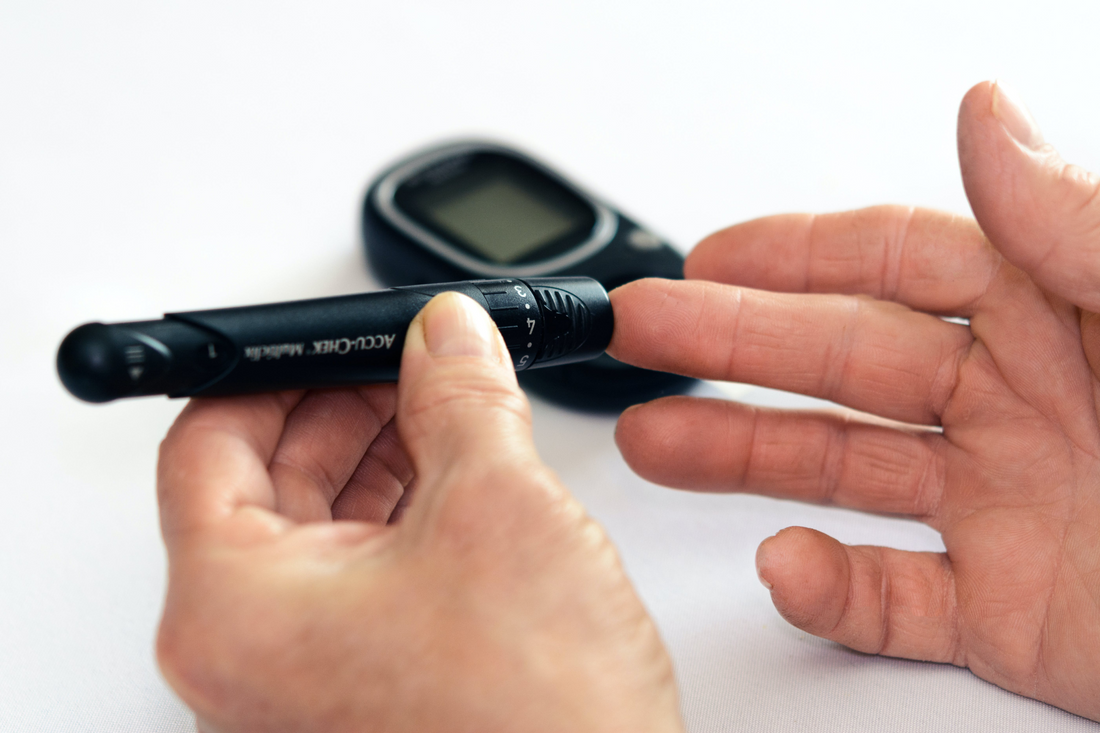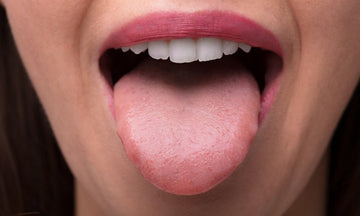Unexpected Connection: How Gum Disease and Diabetes Influence Each Other

Are you constantly battling with swollen and painful gums? Do you find that even gentle brushing leads to gum recession? It's time to consider whether these issues might be linked to problems with your blood sugar control.
In the United States, periodontal disease is alarmingly common, affecting 47.2% of adults over 30 and a staggering 70.1% of those 65 and older. This silent oral health crisis has implications that go far beyond oral health. Recent medical findings underscore a worrying link between periodontitis and systemic diseases, particularly diabetes.
As the prevalence of diabetes is expected to more than double globally by 2050, reaching an estimated 1.3 billion people, understanding and managing the relationship between periodontal health and diabetes becomes critical.
Systematic reviews reveal a bidirectional relationship between these two conditions. Periodontitis not only increases the risk of developing diabetes but also complicates diabetes management, leading to a poorer prognosis.
The Interconnected Risk
Studies indicate a fourfold increase in the risk of developing diabetes in patients with periodontitis compared to those with healthy gums[6], and a 53% increase in risk linked to severe periodontitis[5].
Among non-diabetics, those with periodontitis have significantly higher levels of fasting blood glucose, HbA1c, and insulin resistance[7], suggesting a strong potential connection between periodontitis and elevated diabetes risk.
For diabetics, the presence of periodontitis can lead to poorer blood sugar control[8], a primary task in diabetes management, and subsequently to a higher risk of severe complications such as retinopathy, nephropathy, and cardiovascular diseases[9-10]. Poor glycemic control can precipitate the early onset of these complications.
Furthermore, the severity of periodontitis is strongly correlated with an increased risk of developing a range of complications[11], including diabetic foot, proteinuria, cardiovascular complications, and higher mortality rates[12].
Periodontitis may impair glucose metabolism through two primary pathways: the periodontal pocket-blood circulation pathway and the oral-intestinal pathway.
Bacteria and their by-products in the periodontal pocket can enter the bloodstream via the damaged inner wall of the pocket, causing systemic inflammation that disrupts the insulin signaling pathway and impairs blood sugar regulation.
Additionally, the oral microbiota linked to periodontitis may migrate to the gut with saliva, leading to intestinal dysbiosis and harm to the intestinal mucosal barrier, exacerbating systemic inflammation and negatively affecting glucose metabolism.
Diabetic patients face challenges in wound healing due to abnormal collagen metabolism, exacerbating periodontal disease and reducing healing capacity. The presence of dental implants further elevates the risk of inflammation and infection. Therefore, alongside dietary management and medication for diabetes, regular dental examinations and periodontal treatment, coupled with diligent oral care, are vital for improving blood sugar control and managing periodontal disease effectively.
Periodontitis and Diabetes: A Closer Look at the Connection
The interconnected risks of periodontal disease and diabetes are further highlighted by evidence showing worse glycemic management in diabetics with periodontitis compared to those with healthy gums. Effective blood sugar control is crucial for diabetics, as it directly impacts the prognosis of the disease. Diabetics suffering from periodontitis face a significantly higher likelihood of severe complications such as ischemic heart disease and diabetic nephropathy.
The pathways through which periodontitis can affect glucose metabolism are complex and multifaceted. The periodontal pocket-blood circulation pathway is one such route. In patients with severe periodontitis, the total ulcerated area of the periodontal pocket wall can be as large as 72 cm²[13], providing a significant entry point for subgingival bacteria.
These predominantly Gram-negative bacteria release endotoxins that infiltrate the bloodstream through the damaged pocket wall, causing prolonged systemic inflammation. This frequent and persistent bacteremia and endotoxemia, observed in patients with severe periodontitis following everyday activities like chewing and routine oral hygiene practices[14], suggest that the invasion of bacteria and their toxins into the bloodstream is a regular and enduring process. The level of bacteremia resulting from teeth brushing is positively correlated with plaque accumulation and gingival inflammation severity[15].
The oral-intestinal pathway also plays a crucial role. The saliva microbiome of patients with periodontitis is significantly enriched with various periodontal pathogens. These bacteria can enter the gut with saliva and disrupt its microbial balance. Studies in mice have shown that oral administration of periodontal pathogens, such as Porphyromonas gingivalis[16] and Aggregatibacter actinomycetemcomitans[17], results in alterations to the gut microbiota, systemic inflammation, and insulin resistance.
These findings substantiate the theory that periodontal pathogens entering the gut can induce changes in the gut microbiome and metabolic disturbances in the host.
Given these insights, it is evident that managing periodontal health is a critical aspect of diabetes care. Regular dental check-ups, effective periodontal treatments, and maintaining good oral hygiene are essential for controlling blood sugar levels and reducing the risk of diabetes-related complications. It is also important for healthcare providers to recognize the significance of periodontal health in the overall management of diabetes and to encourage their patients to maintain good oral health practices.
In conclusion, the relationship between periodontal disease and diabetes is a compelling example of the interconnectedness of oral health and overall systemic health. By understanding and addressing this link, individuals can significantly improve their health outcomes, emphasizing the importance of comprehensive healthcare that includes regular oral care.
Revolutionary Oral Care Now in the U.S.
Addressing the need for optimal gum health, “Unitein Gum Restore Toothpaste,” a groundbreaking product from Korea that has made a resounding entrance into the U.S. market in early 2023. This innovative toothpaste is uniquely formulated to target periodontitis and foster gum cell repair, marking a new era in oral health care.
Testimonials That Speak Volumes
Our customers' experiences are a testament to the effectiveness of Unitein Toothpaste.
One verified customer, Polo, shared a transformative experience: "Does what is says! I had a dental crown lengthening procedure which required a gum resection about 5-6 weeks before this toothpaste arrived. The area was NOT healing on schedule, it was an inflamed, painful mess for weeks with no real progress. The very first time I used this toothpaste, I felt the area calm down. My periodontist had said to brush the area thoroughly to stimulate the gums to heal. I had been doing that, but every other toothpaste I tried, including the one recommended by the doctor, caused a horribly painful burning sensation in the diseased gum that would last for 20 mins or more after brushing. The pain was so bad, it would make my eyes water. On the other hand, this Unitein toothpaste only tingled upon first application, and then the sensation would slowly convert to a soothing feeling over the next 5-10 minutes. My gums got better and better with each passing day. I am very grateful to have found this toothpaste on Epoch Times and will continue to use it."
Another satisfied user, Amber, commented on its remarkable impact on gum recession: "Amazing product! I have been fighting gum recession for 20 years. Since using this product even my worst recession spots are returning to optimal health, light pink gums and happy tissue. I'd recommend this to anyone struggling with recession and overall gum health. Double thumbs up!"
See Unitein toothpaste Reviews ➤
Proven Results from a Trusted Survey
A comprehensive survey conducted by Green Eastern in Hong Kong, involving 463 participants, revealed impressive results: 66% of users reported a reduction in gum inflammation, while 52.4% observed decreased gum recession after using the toothpaste for over a year.

Figure 1 Survey result showing 66% of participants reported reduced gum inflammation.

Figure 2 Survey results showing 52.4% of participants reported reduced gum recession.
A Legacy of Excellence
Since its debut in Hong Kong in 2017, Unitein Toothpaste has risen to be a top-selling product. Boasting 99% natural ingredients and free from harmful chemicals, it's a safe choice for all ages. The key ingredient, 'Unitein', developed by Dr. Lee Kyeong Hwa, is a patented marvel, proven effective against diseases related to abnormal cells and diabetes.

Figure 3 The inventor of Unitein, Dr. Lee Kyeong Hwa receives 2017 Korean Women Inventor's Gold Award.
Further enhancing its potency, Unitein incorporates a natural blend of Deep Sea Mineral (DSM) salts. This addition not only boosts Unitein's anti-cancer and anti-inflammatory properties but also strengthens overall oral health.
For optimal results, it is recommended that users allow the toothpaste to remain in their mouth for two to three minutes after brushing, followed by rinsing, to maximize absorption.
Unitein Toothpaste: Your Partner in Gum Health
Choose Unitein Gum Restore Toothpaste for a healthier, happier smile. Its soothing, healing properties and natural formulation make it the perfect ally in your oral care routine. Experience the difference today and join our community of satisfied customers who have taken a step towards better gum health.
See Unitein toothpaste Reviews ➤
5. WU C Z, YUAN Y H, LIU H H, et al Epidemiologic relationship between periodontitis and type 2 diabetes mellitus. BMC Oral Health. 2020;20(1):204. doi: 10.1186/s12903-020-01180-w. [PMC free article] [PubMed] [CrossRef] [Google Scholar]
6. CHOI Y H, MCKEOWN R E, MAYER-DAVIS E J, et al Association between periodontitis and impaired fasting glucose and diabetes. Diabetes Care. 2011;34(2):381–386. doi: 10.2337/dc10-1354. [PMC free article] [PubMed] [CrossRef] [Google Scholar]
7. GEORGE A K, NARAYAN V, KURIAN N, et al A pilot study on glycemia and insulin resistance in patients with severe periodontitis. J Indian Soc Periodontol. 2021;25(5):393–398. doi: 10.4103/jisp.jisp_419_20. [PMC free article] [PubMed] [CrossRef] [Google Scholar]
8. SANTONOCITO S, POLIZZI A, MARCHETTI E, et al Impact of periodontitis on glycemic control and metabolic status in diabetes patients: current knowledge on early disease markers and therapeutic perspectives. Mediators Inflamm. 2022;2022:4955277. doi: 10.1155/2022/4955277. [PMC free article] [PubMed] [CrossRef] [Google Scholar]
9. American Diabetes Association Microvascular complications and foot care: standards of medical care in diabetes-2018. Diabetes Care. 2018;41(Suppl 1):S105–S118. doi: 10.2337/dc18-S010. [PubMed] [CrossRef] [Google Scholar]
10. American Diabetes Association Cardiovascular disease and risk management: standards of medical care in diabetes-2018. Diabetes Care. 2018;41(Suppl 1):S86–S104. doi: 10.2337/dc18-S009. [PubMed] [CrossRef] [Google Scholar]
11. NOMA H, SAKAMOTO I, MOCHIZUKI H, et al Relationship between periodontal disease and diabetic retinopathy. Diabetes Care. 2004;27(2):615. doi: 10.2337/diacare.27.2.615. [PubMed] [CrossRef] [Google Scholar]
12. GRAZIANI F, GENNAI S, SOLINI A, et al A systematic review and meta-analysis of epidemiologic observational evidence on the effect of periodontitis on diabetes An update of the EFP-AAP review. J Clin Periodontol. 2018;45(2):167–187. doi: 10.1111/jcpe.12837. [PubMed] [CrossRef] [Google Scholar]
13. PAGE R C The pathobiology of periodontal diseases may affect systemic diseases: inversion of a paradigm. Ann Periodontol. 1998;3(1):108–120. doi: 10.1902/annals.1998.3.1.108. [PubMed] [CrossRef] [Google Scholar]
14. HORLIANA A C, CHAMBRONE L, FOZ A M, et al Dissemination of periodontal pathogens in the bloodstream after periodontal procedures: a systematic review. PLoS One. 2014;9(5):e98271. doi: 10.1371/journal.pone.0098271. [PMC free article] [PubMed] [CrossRef] [Google Scholar]
15. TOMÁS I, DIZ P, TOBÍAS A, et al Periodontal health status and bacteraemia from daily oral activities: systematic review/meta-analysis. J Clin Periodontol. 2012;39(3):213–228. doi: 10.1111/j.1600-051X.2011.01784.x. [PubMed] [CrossRef] [Google Scholar]
16. ARIMATSU K, YAMADA H, MIYAZAWA H, et al Oral pathobiont induces systemic inflammation and metabolic changes associated with alteration of gut microbiota. Sci Rep. 2014;4(18):4828. doi: 10.1038/srep04828. [PMC free article] [PubMed] [CrossRef] [Google Scholar]
17. KOMAZAKI R, KATAGIRI S, TAKAHASHI H, et al Periodontal pathogenic bacteria, Aggregatibacter actinomycetemcomitans affect non-alcoholic fatty liver disease by altering gut microbiota and glucose metabolism. Sci Rep. 2017;7(1):13950. doi: 10.1038/s41598-017-14260-9. [PMC free article] [PubMed] [CrossRef] [Google Scholar]
No comments









0 comments